The planet Saturn has intrigued humans for centuries. Dutch astronomer Christiaan Huygens in 1655 was the first to accurately describe Saturn’s rings as a disk surrounding the planet. Although Italian astronomer Galileo Galilei had observed them when he first turned his telescope toward Saturn in 1610, his telescope was not powerful enough to discern their true nature. Huygens also discovered Saturn’s largest moon, Titan. Italian astronomer Giovanni Cassini discovered four of Saturn’s moons and divisions within the planet’s rings. In the late 1970s and early 1980s, three spacecraft, Pioneer 11 and Voyager 1 and 2, completed reconnaissance flybys of Saturn, returning stunning images and a wealth of information about the planet, its rings, and numerous satellites. But as is often the case, this new information just raised more questions and scientists were eager to observe Saturn over a longer period of time.
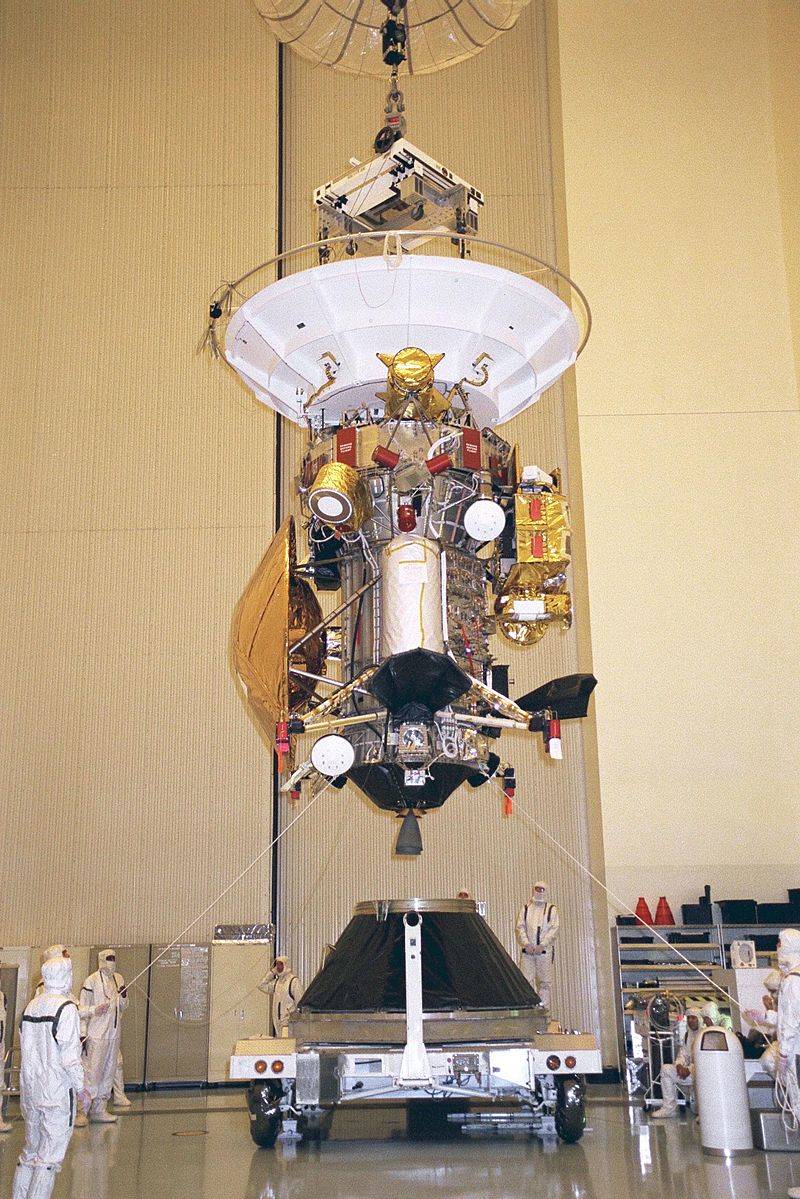
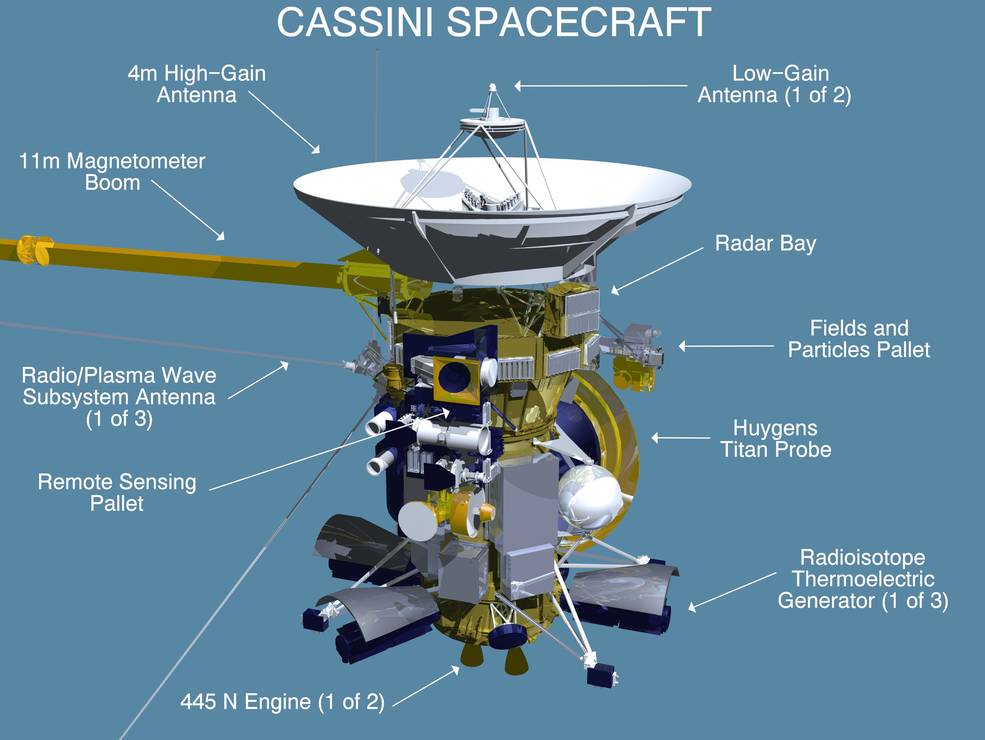
Left: Cassini-Huygens shortly after its arrival at Cape Canaveral; the Huygens probe is the gold
disk shaped object on the left of Cassini. Right: Illustration of Cassini-Huygens and its scientific
instruments.
Under development since 1989, Cassini-Huygens was a joint project among NASA, the European Space Agency (ESA), and the Italian Space Agency (ASI). One of the most ambitious planetary projects ever attempted, Cassini-Huygens was managed by the Jet Propulsion Laboratory in Pasadena, California. NASA built the Cassini Saturn orbiter with ASI providing its high-gain antenna and several science instruments while ESA built the Huygens lander to make a descent and soft landing on Saturn’s largest moon Titan.
The Cassini orbiter carried 12 science instruments grouped in three disciplines to study the Saturn system. A suite of four optical remote sensing instruments were mounted on the spacecraft’s remote sensing pallet and were designed for studies in the visible, infrared, and ultraviolet ranges of the electromagnetic spectrum. Six instruments studied the dust, plasma, and magnetic fields around Saturn. Two microwave remote sensing instruments used radio waves to map atmospheres, determine the masses of Saturn’s moons, analyze the size of particles in the planet’s rings, and probe through Titan’s dense atmosphere to identify surface features.
The Huygens lander carried six instruments to study Titan during its descent through the atmosphere and upon reaching the surface. Huygens measured the physical, chemical, and electrical properties of the atmosphere including any suspended particulates, wind speed during the descent, an imager to view the surface during the descent, and the physical properties of Titan’s surface.
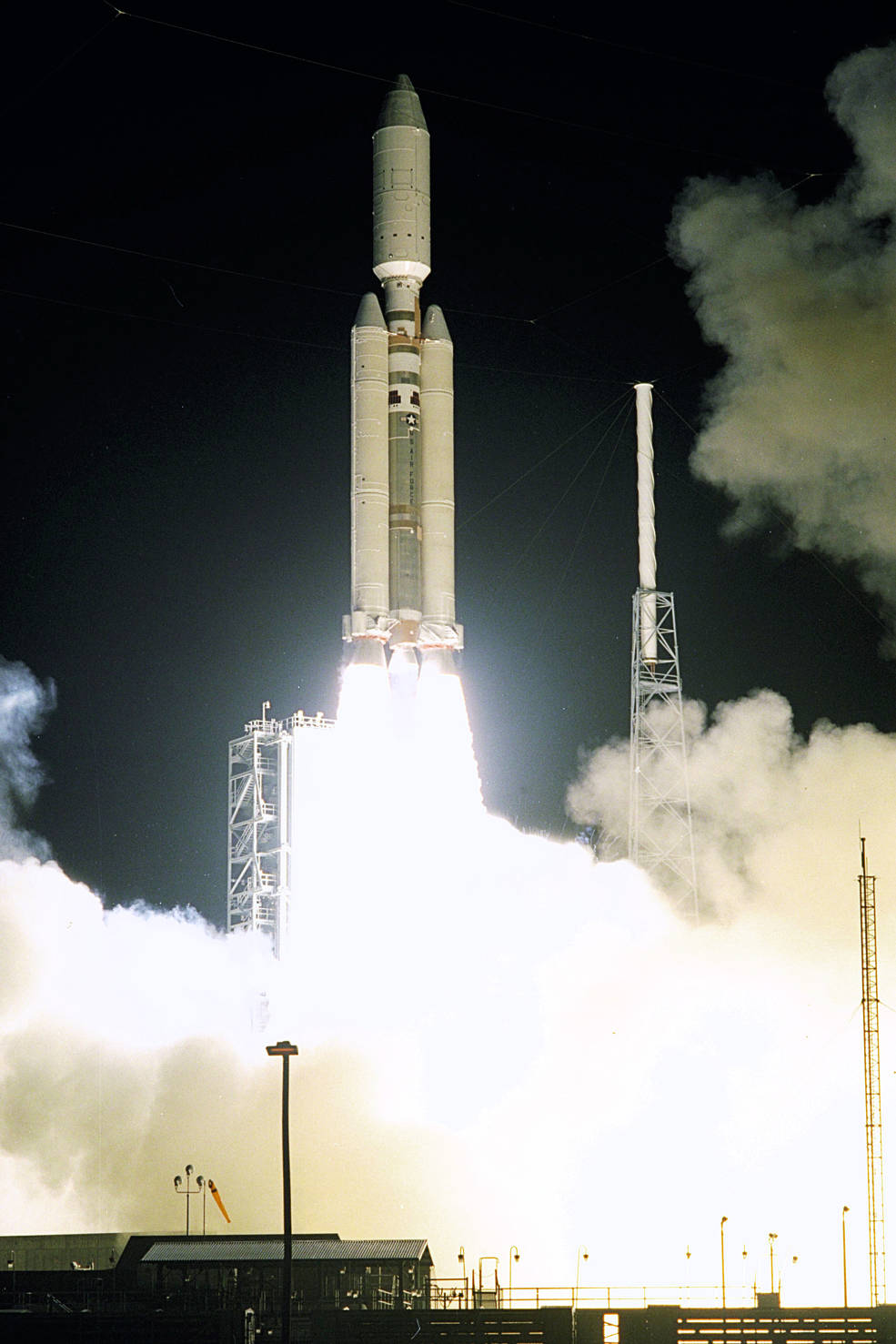
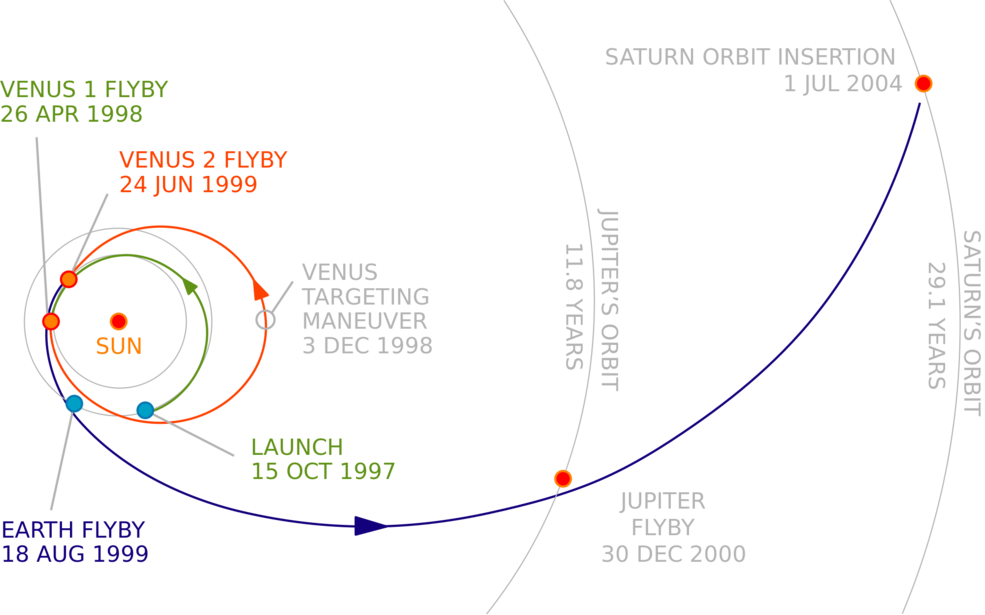
Left: Launch of Cassini-Huygens (1997). Right: Trajectory of Cassini-Huygens showing the gravity-assist
flybys required to reach Saturn.
Cassini-Huygens, at 12,593 pounds one of the heaviest planetary probes ever, was launched on Oct. 15, 1997, on a Titan IVB/Centaur rocket from Cape Canaveral Air Force Station in Florida. Although that was the most powerful expendable launch vehicle available, it wasn’t powerful enough to send the massive Cassini-Huygens on a direct path to Saturn. Instead, the spacecraft relied on several gravity assist maneuvers to achieve the required velocity to reach the ringed-planet. This seven-year journey took it past Venus twice, the Earth once, and Jupiter once, gaining more velocity with each flyby for the final trip to Saturn.
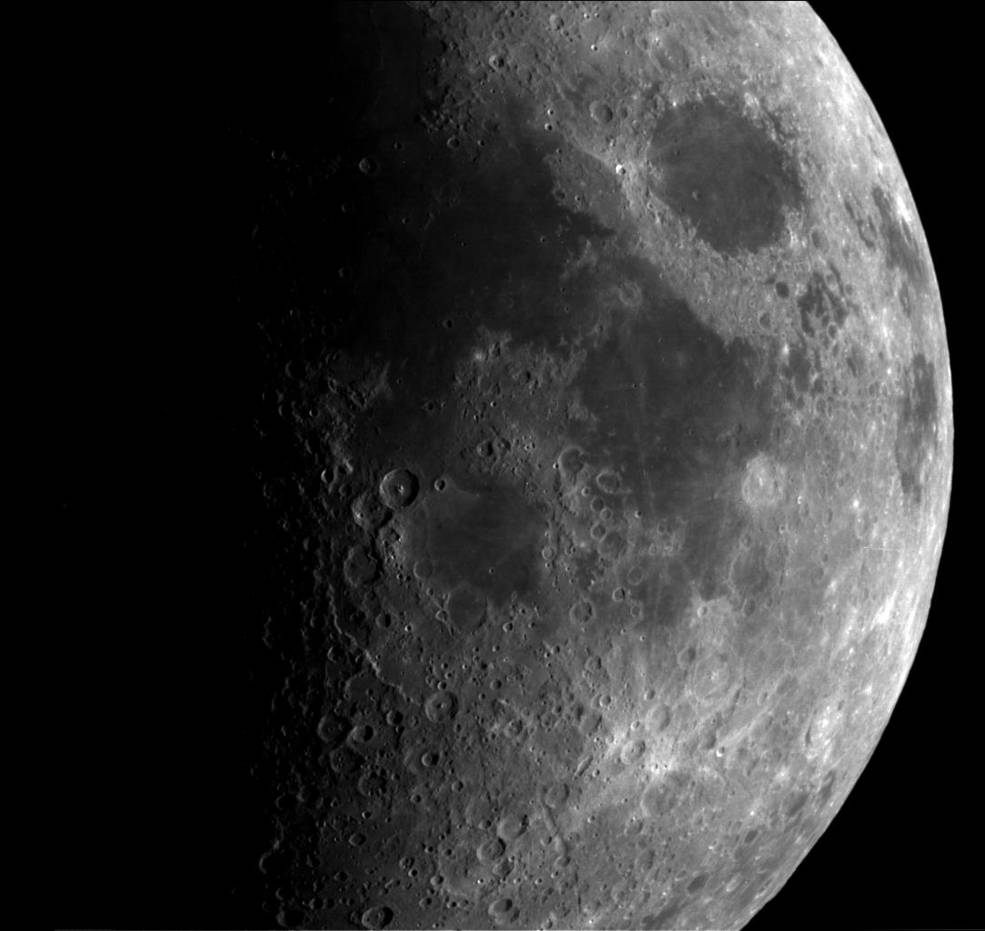
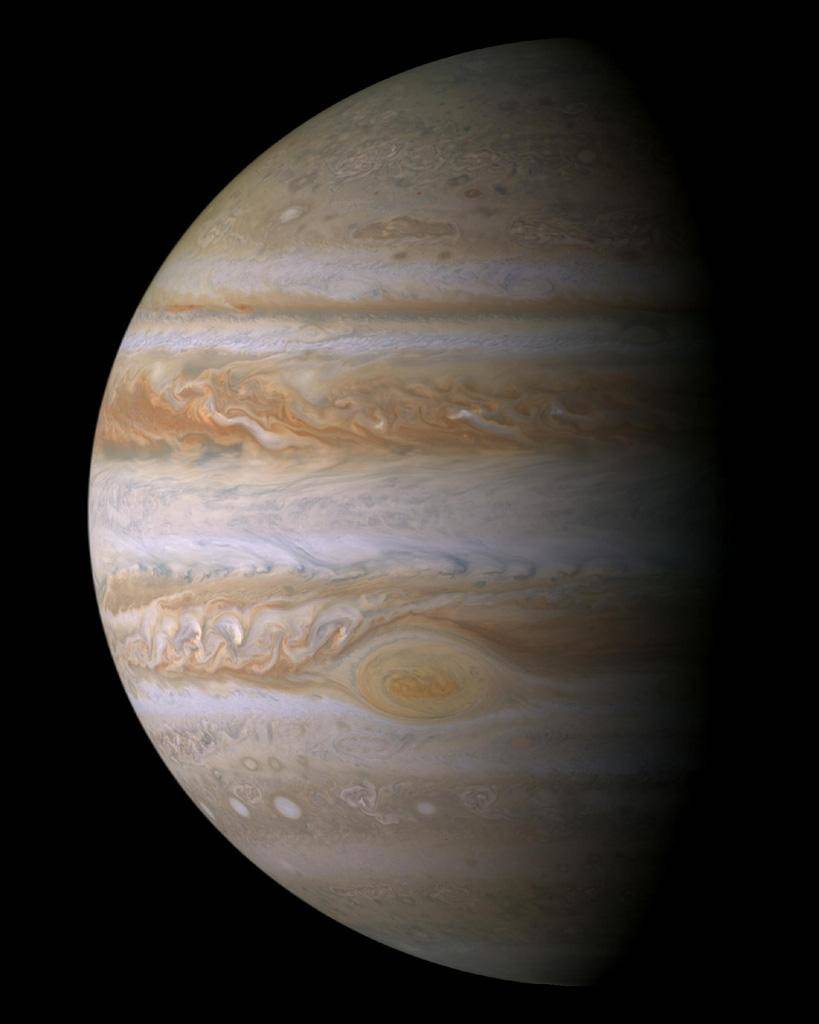
Left: Cassini photograph of Earth’s Moon during the August 1999 flyby.
Right: Cassini photograph of Jupiter during the December 2000 encounter.
On April 26, 1998, Cassini-Huygens completed its first flyby of Venus at a distance of 176 miles. Science instruments on the spacecraft searched for lightning in Venus’ atmosphere during the flyby, and the radar instrument onboard was activated to test a signal bounced off the planet’s surface, a test of the system to be used later to observe cloud-shrouded Titan. Cassini-Huygens completed its second Venus gravity-assist flyby on June 24, 1999, this time at a distance of 370 miles. This was followed by a flyby of Earth on Aug 18, with Cassini-Huygens coming within 728 miles of its home planet and 234,000 miles of Earth’s Moon. The spacecraft completed its final gravity assist by flying within 6,122,323 miles of giant planet Jupiter on Dec. 30, 2000. With the Galileo spacecraft in orbit around Jupiter at the time, the two spacecraft conducted joint science observations of the planet. And then it was on to Saturn.

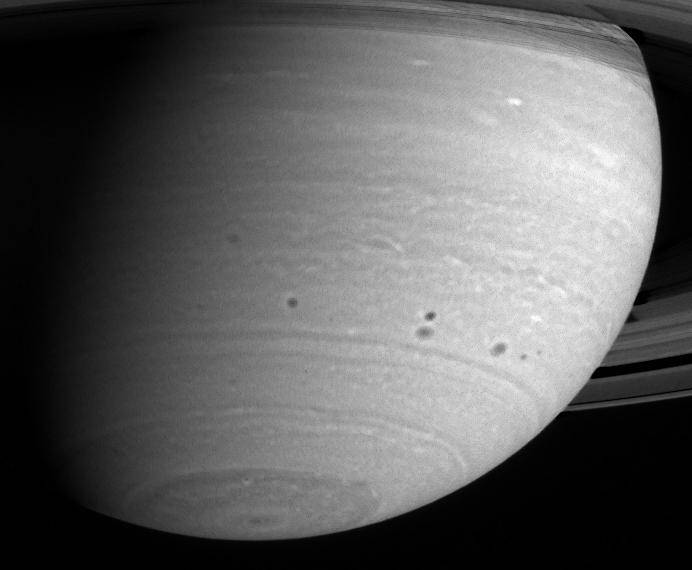
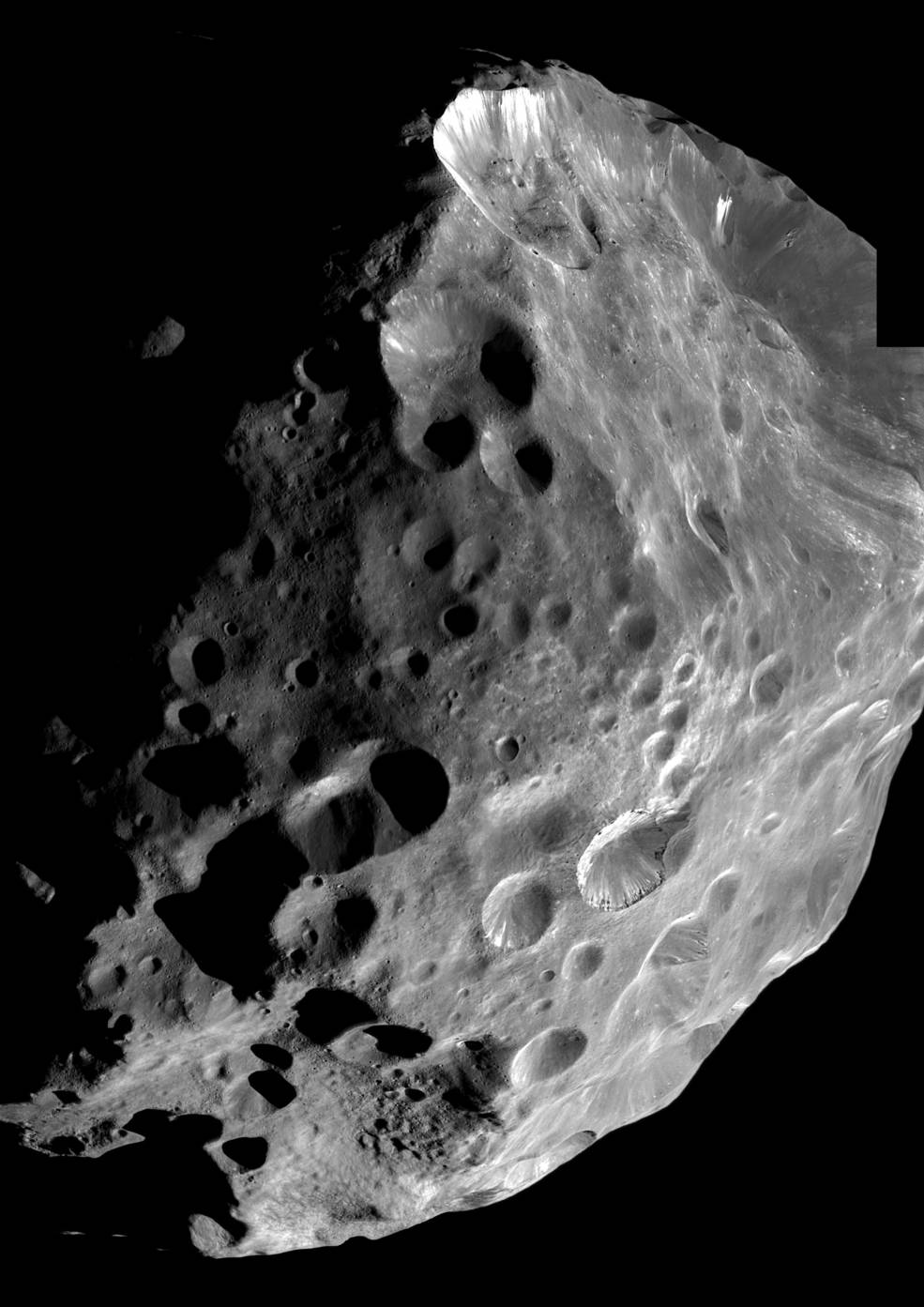
Left: Test image Oct. 31, 2002, with Titan as small dot at upper left. Middle: Storms on Saturn observed by Cassini in May 2004. Right: Image of Phoebe taken while Cassini was approaching Saturn.
A test of Cassini’s camera on Oct. 31, 2002, 20 months before arriving to Saturn, provided the first image of the ringed planet and its largest moon Titan from a distance of 177 million miles, or nearly twice the Earth-Sun distance. While still approaching the planet, Cassini observed two storm systems in Saturn’s atmosphere merging into one and discovered the first two of the six new satellites it would find during its time observing Saturn. Three weeks before entering orbit around Saturn, Cassini flew within 1,200 miles of one of its outer satellites, Phoebe, taking remarkable photographs of its battered surface.
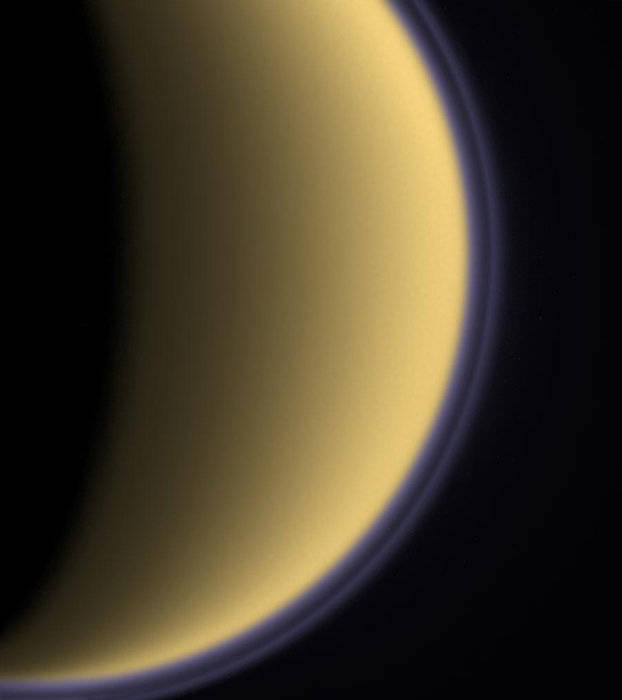
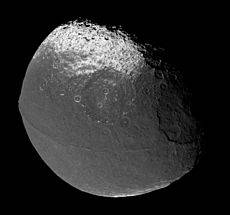
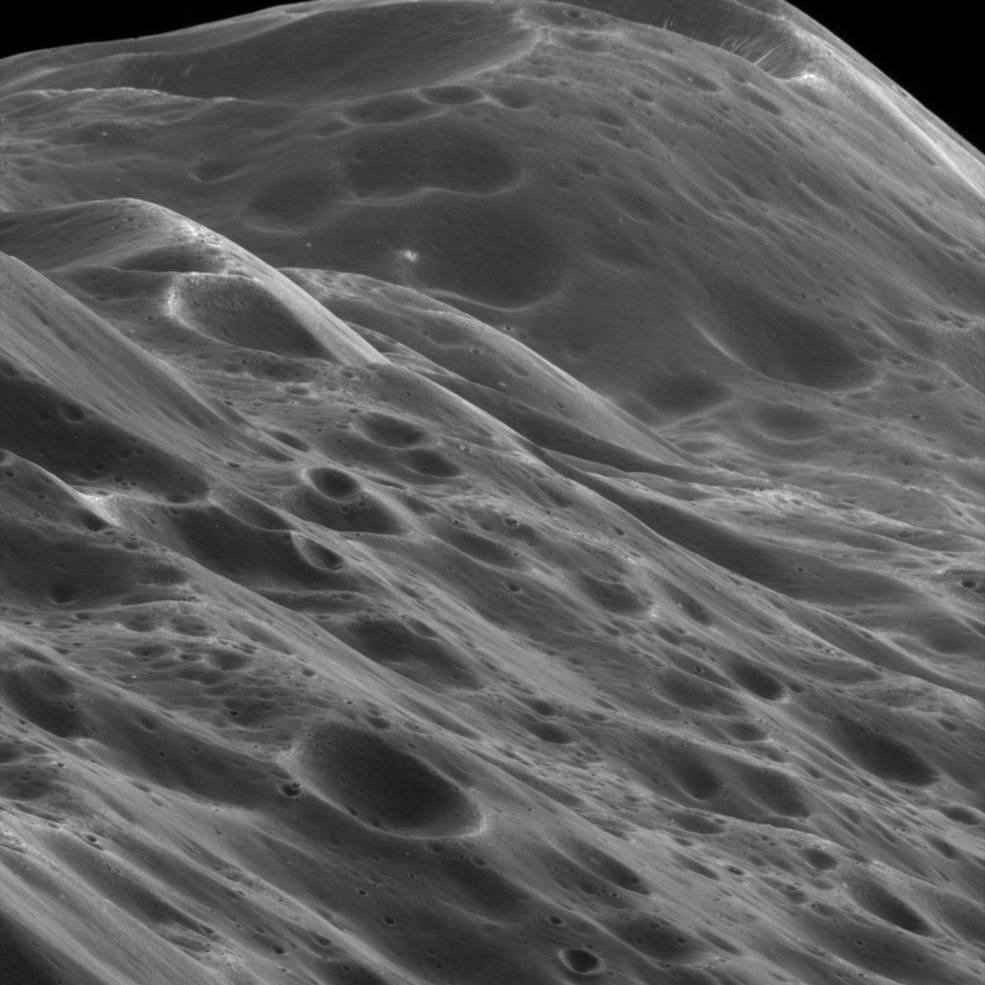
Left: One of the first images of Titan taken in July 2004, showing the purple haze layer in the upper atmosphere.
Middle: Early photo of Iapetus, showing the long mountain range.
Right: A closeup of the mountain range on Iapetus taken three years later.
On July 1, 2004, with the Huygens lander still attached, Cassini fired its main engine for 96 minutes and entered an elliptical orbit around Saturn, becoming the first spacecraft to do so. Thus began an incredible 13-year in-depth exploration of the planet, its rings and its satellites, with scores of remarkable discoveries. Within the first few months, Cassini completed three flybys of Titan and discovered two additional moons orbiting Saturn. It also took the first close-up photographs of Saturn’s outer moon Iapetus on Dec. 30, 2004, showing a long mountain range. Taking advantage of its orbital vantage point, Cassini returned for a close look three years later on Sep. 10, 2007.
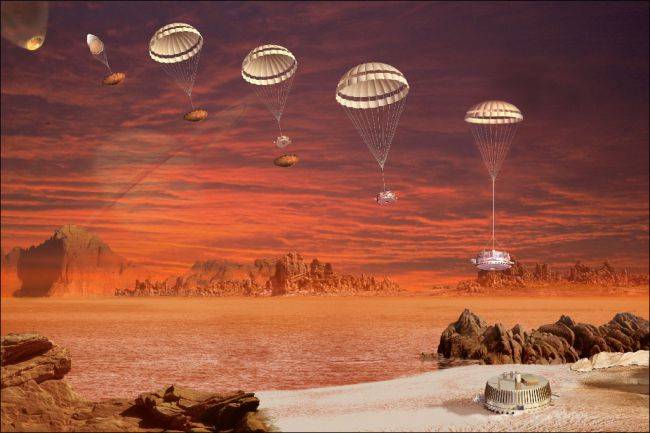
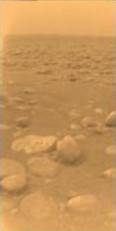
Left: Illustration of the descent of the Huygens probe to the surface of Titan.
Right: Image from Huygens of the surface of Titan.
Credits: ESA.
On Dec. 24, 2004, Huygens separated from Cassini, and on Jan. 14, 2005, entered Titan’s dense atmosphere. The descent to the surface lasted 2 hours and 27 minutes, during which Huygens’ instruments analyzed the atmosphere and returned images of the surface, transmitting its data to Earth via the Cassini orbiter. Slowed by a parachute, the 700-pound probe made a soft landing on Titan. This marked the furthest landing by any spacecraft in the solar system. Huygens continued to return data for another 72 minutes from the surface of Titan until Cassini dropped below the horizon and could no longer relay the probe’s signals. The probe analyzed Titan’s surface and returned the first photographs from the distant moon, even managing to capture the shadow of its own parachute as it slowly settled to the surface. In all, Huygens returned 376 images during the descent and from the surface.
One of Cassini’s most surprising discoveries concerned Enceladus, an icy moon expected to be inert. On July 14, 2005, Cassini made a close flyby of Enceladus at a distance of 109 miles and discovered that the moon was in fact quite active. It discovered evidence for ice volcanism with a large cloud of water vapor at the moon’s south pole and warm fractures on the surface where water vapor was escaping. Cassini further confirmed that the material emanating from Enceladus is the major source of Saturn’s largest ring, the E-ring. Subsequent flybys confirmed these findings, with Cassini even photographing the venting from what is most likely a global ocean of liquid water beneath the icy crust.
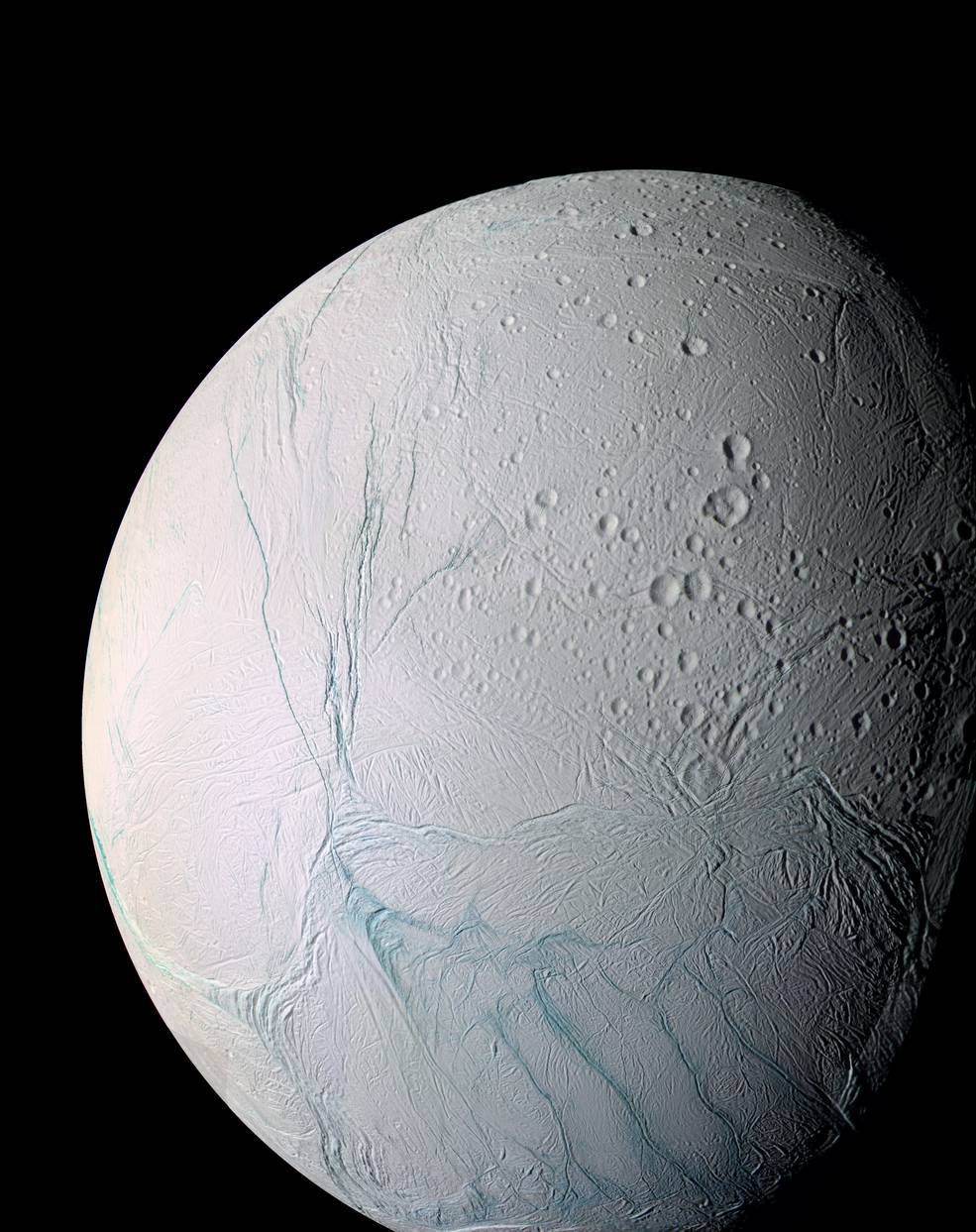
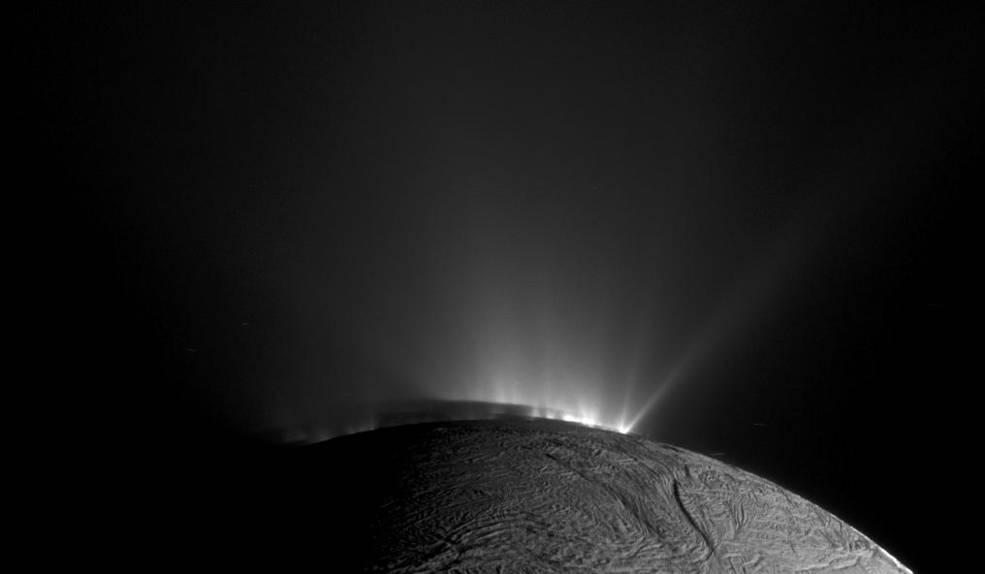
Left: Composite image of the icy moon Enceladus taken in 2005.
Right: Plumes of water vapor emanating from Enceladus.
During more than 100 targeted flybys of Titan, Cassini mapped its surface beneath the orange clouds and discovered lakes and seas of liquid methane and ethane across its frigid surface. Like Earth and Mars, Titan has seasons, each lasting 7.5 years. And these seasons result in Earth-like cycles of liquids flowing across its surface. In addition to nitrogen, Cassini and Huygens detected other chemicals in Titan’s atmosphere, including propylene and hydrogen cyanide, indicating complex chemical reactions are taking place. These complex hydrocarbons contribute to the haze layers seen in Titan’s upper atmosphere. Methane and ethane rain from Titan’s clouds replenishing the lakes and seas.
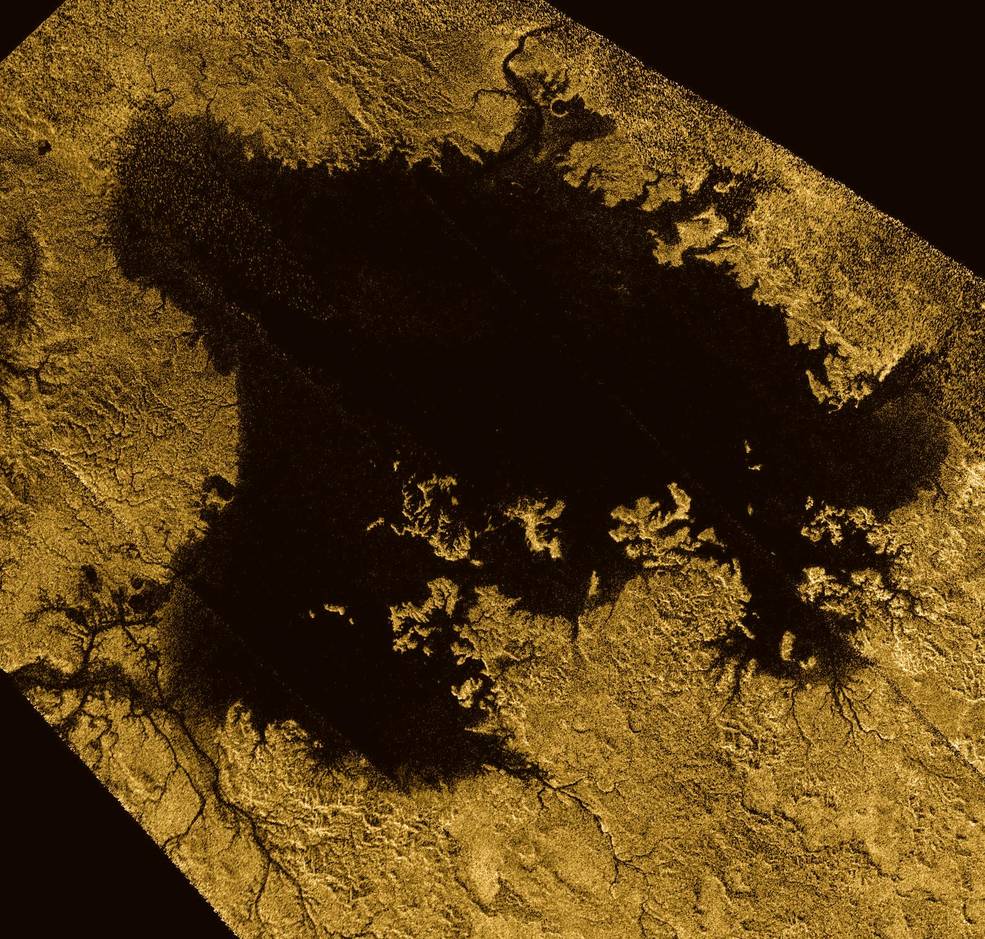
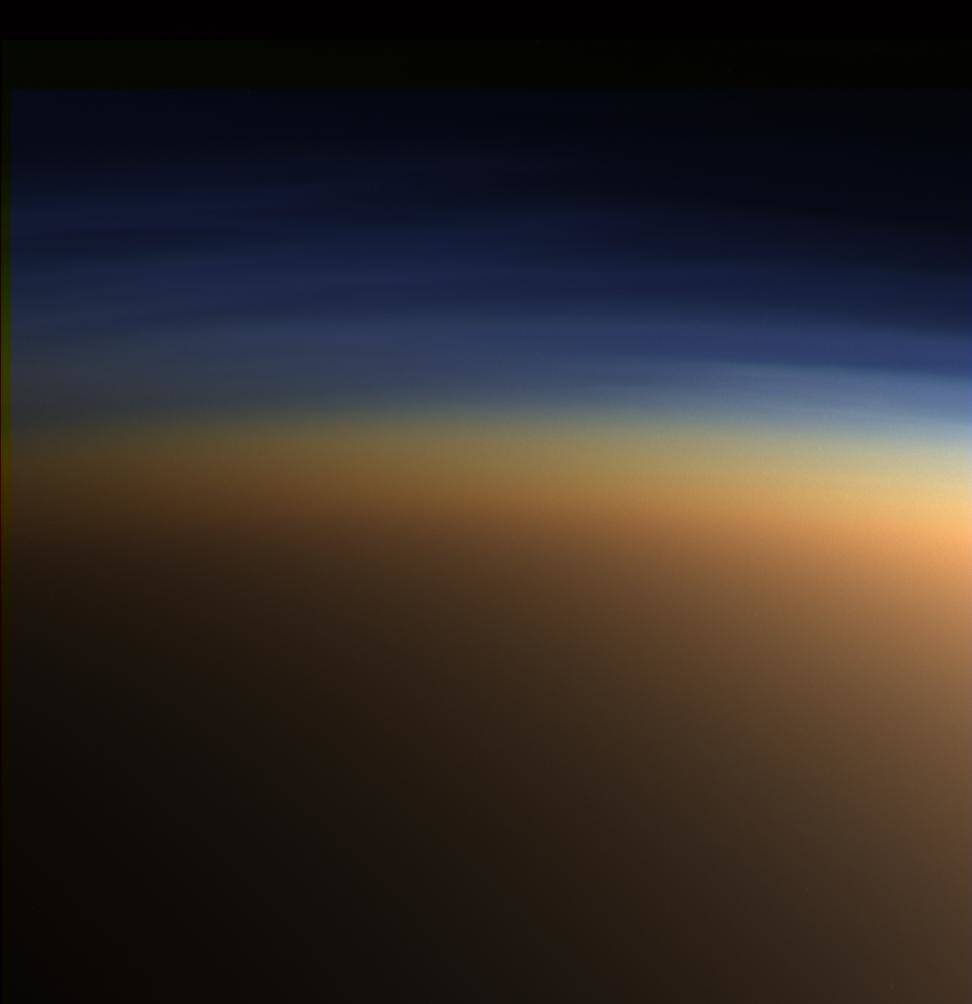
Left: Mosaic of radar images of Ligeia Mare, a hydrocarbon sea on Titan.
Right: Image of haze layers in Titan’s upper atmosphere.
Cassini’s initial four-year mission ended in June 2008, but the spacecraft earned two mission extensions. The first extension from July 2008 to September 2010 was called the Equinox Mission since it coincided with Saturn’s equinox in August 2009, with sunlight hitting the ring system edge on. The Solstice Mission extension lasted from then until the mission’s end in September 2017, passing through Saturn’s solstice in May 2017. Cassini’s long mission enabled scientists to observe Saturn for nearly half of its 30-year orbit around the Sun, including discovery of hexagonal cloud patterns around Saturn’s north pole and a long-lived storm that circled the planet’s northern hemisphere. Cassini made repeated observations of many of Saturn’s 62 known moons, six of which it discovered. Each moon appears to be unique, reflecting its specific history within the Saturnian system. Of note was the interaction of some of the small moons imbedded within the rings, such as Daphnis orbiting in Keeler Gap of the A-ring causing horizontal and vertical waves of the ring particles.
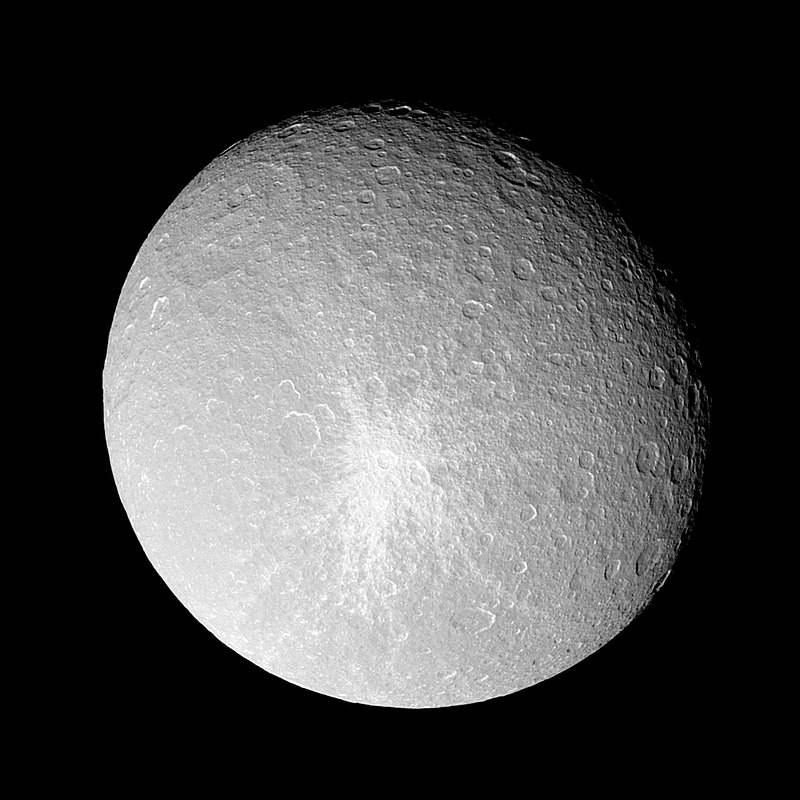
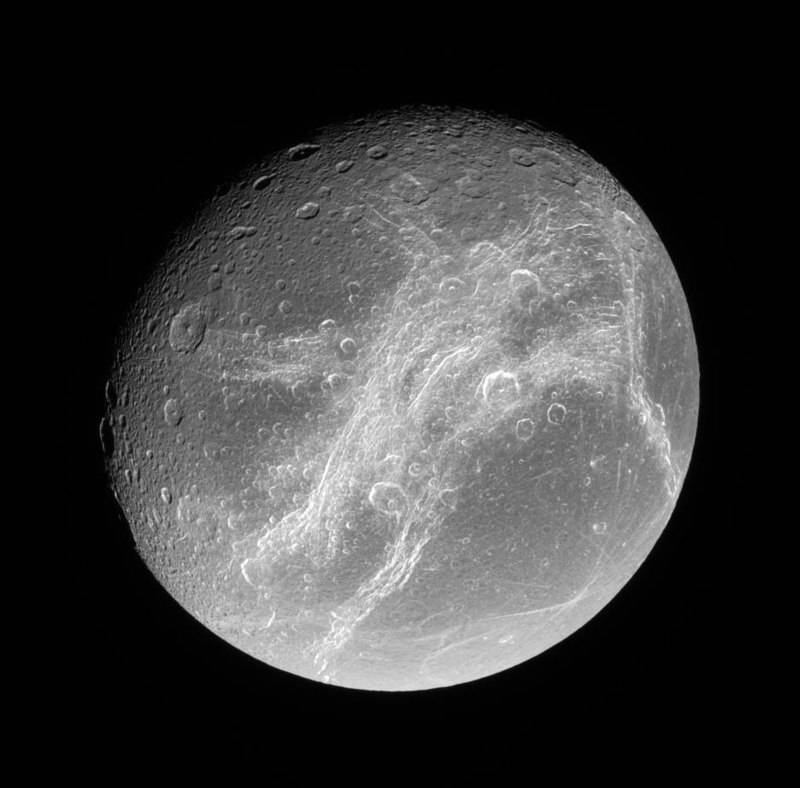
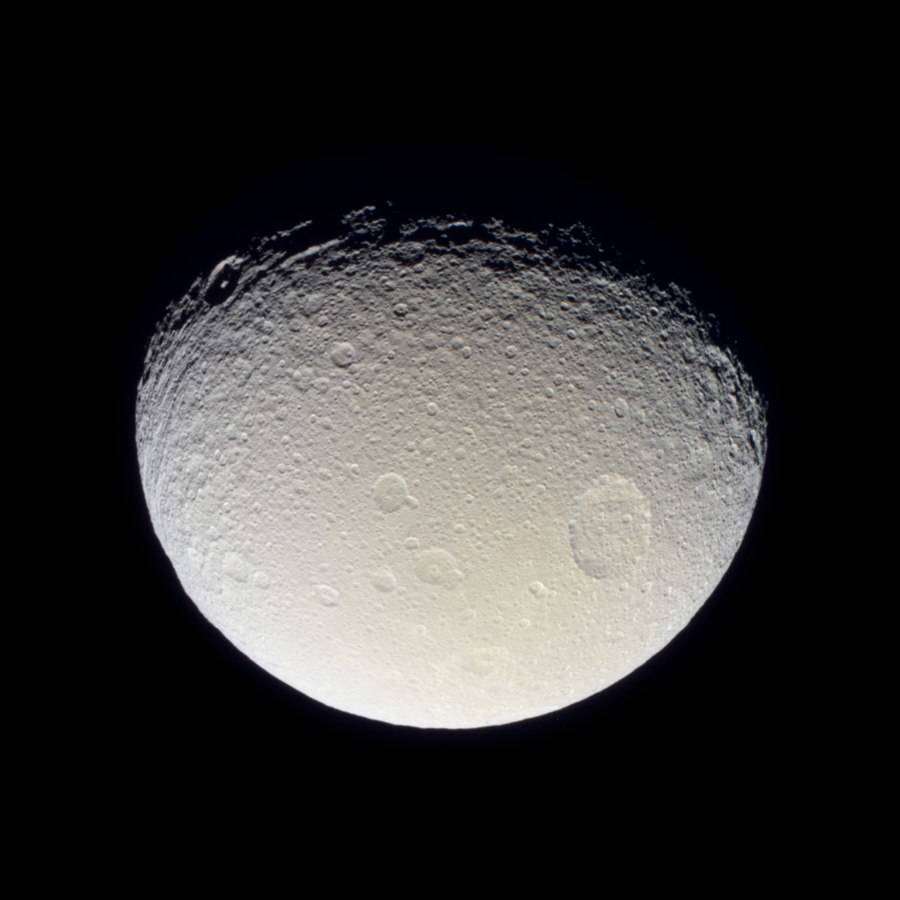
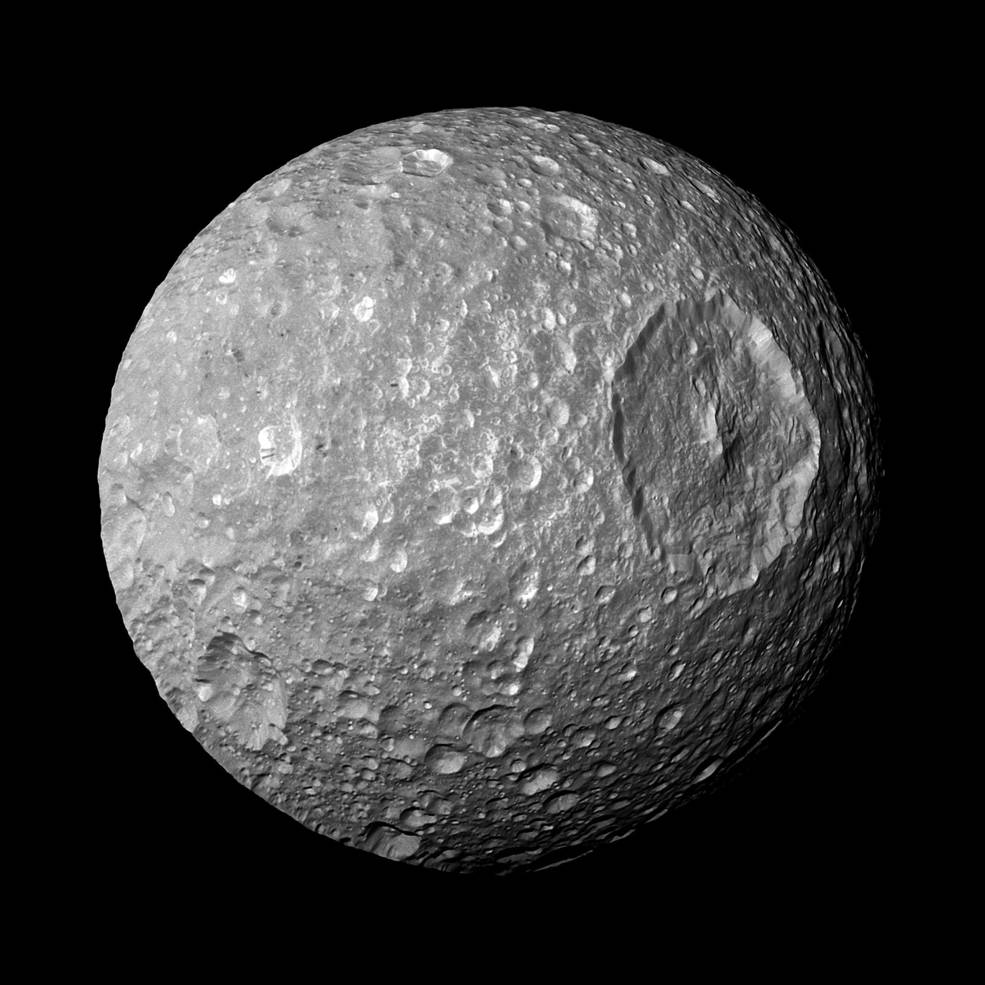
Cassini images of Saturn’s icy mid-size moons (left to right) Rhea, Dione, Tethys, and Mimas.
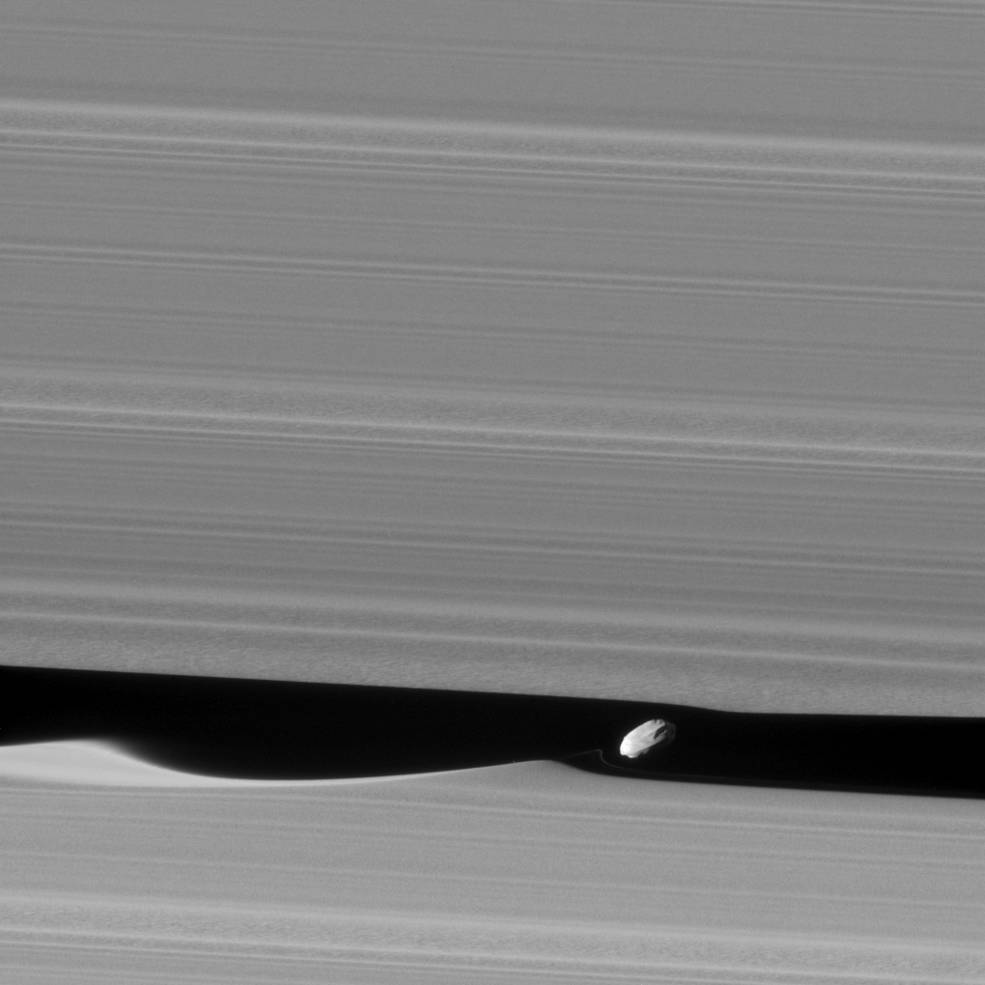
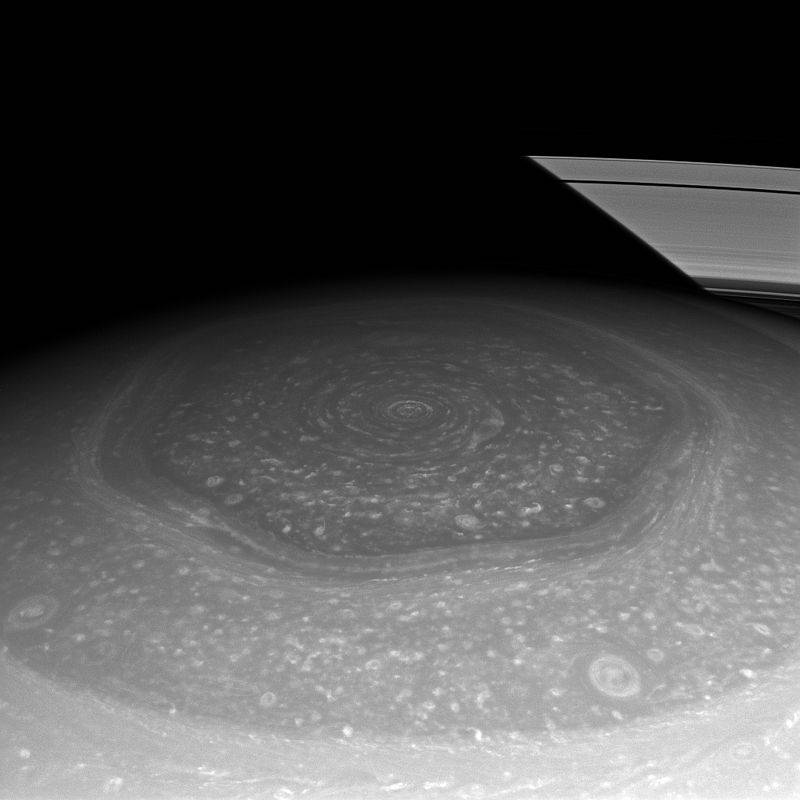
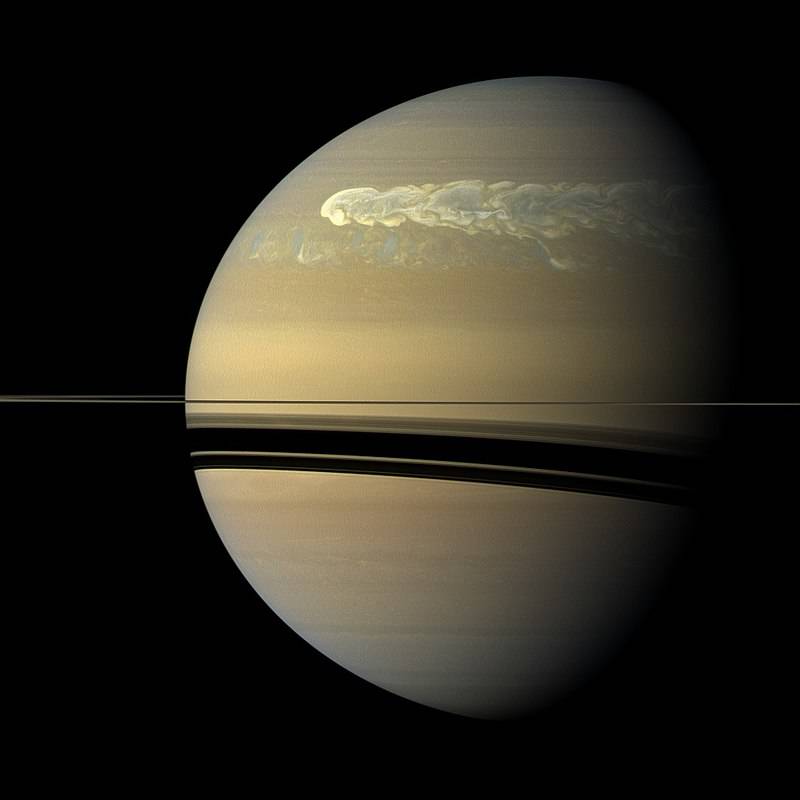
Left: Daphnis orbiting in the Keeler Gap creating waves in Saturn’s A-ring. Middle: Hexagonal cloud
patterns in Saturn’s north polar region. Right: Large white storm in Saturn’s northern hemisphere.
On July 19, 2013, Cassini took a series of images of Saturn from a distance of about 750,000 miles as the planet eclipsed the Sun. This was the second time Cassini attempted such an image, but this event was dubbed The Day the Earth Smiled photo. People on Earth were notified in advance that Cassini would be taking their picture and were encouraged to smile at its camera. With the unique backlighting by the Sun, many new features of the rings were now visible. In the mosaic photograph released publicly, dim objects were artificially brightened. In addition to Earth, the Moon, Venus, Mars and seven of Saturn’s satellites are visible in the photograph.
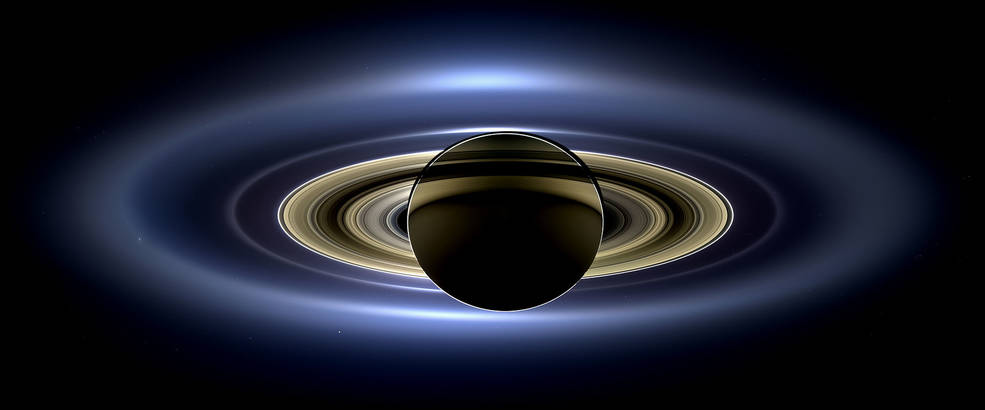
The Day the Earth Smiled Cassini image of Saturn as the planet eclipsed the Sun. Earth appears as a faint dot at Saturn’s 4 o’clock position.
In December 2015, Cassini began a series of orbital maneuvers, aided by gravity-assist flybys of Titan, to tilt its orbit out of Saturn’s equatorial ring plane. In these polar orbits, Cassini passed through the outer reaches of Saturn’s rings, sampling particles and gases in that previously unexplored region. A flyby of Titan in April 2017 reshaped Cassini’s trajectory for the last phase of its mission at Saturn, the Grand Finale, an event depicted in an Emmy-winning video. In this phase, the spacecraft made 22 plunges through the 1,500-mile gap between the planet and its innermost ring, another previously unexplored region. During its 294th orbit around the planet, its attitude control fuel virtually exhausted, Cassini plunged into Saturn’s atmosphere, continuing to send data until the very last moment. Controllers chose this destructive end to safeguard against the remote possibility that Cassini could crash on one of Saturn’s moons, contaminating it with Earth microorganisms. Although the spacecraft may be gone, the treasure trove of information it returned about Saturn will keep scientists busy for many years to come.
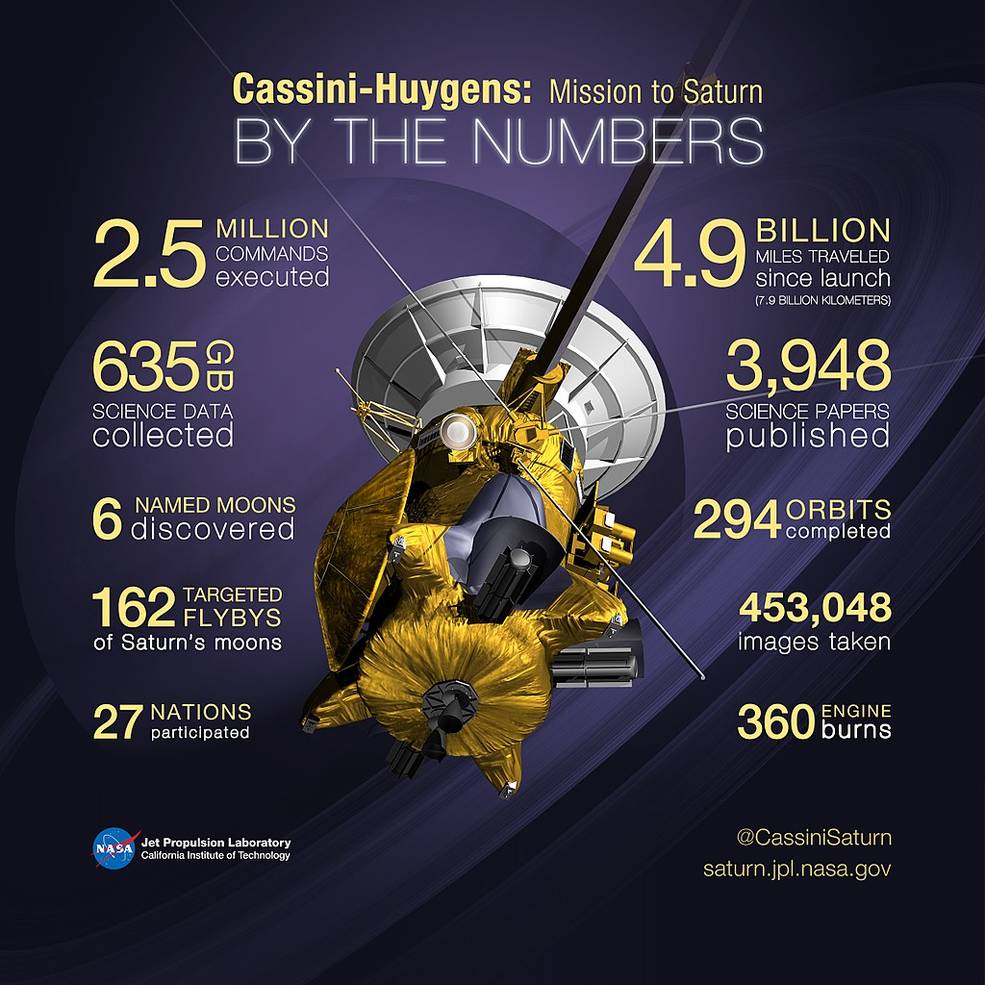
Cassini-Huygens by the numbers.
Credits: JPL.
























